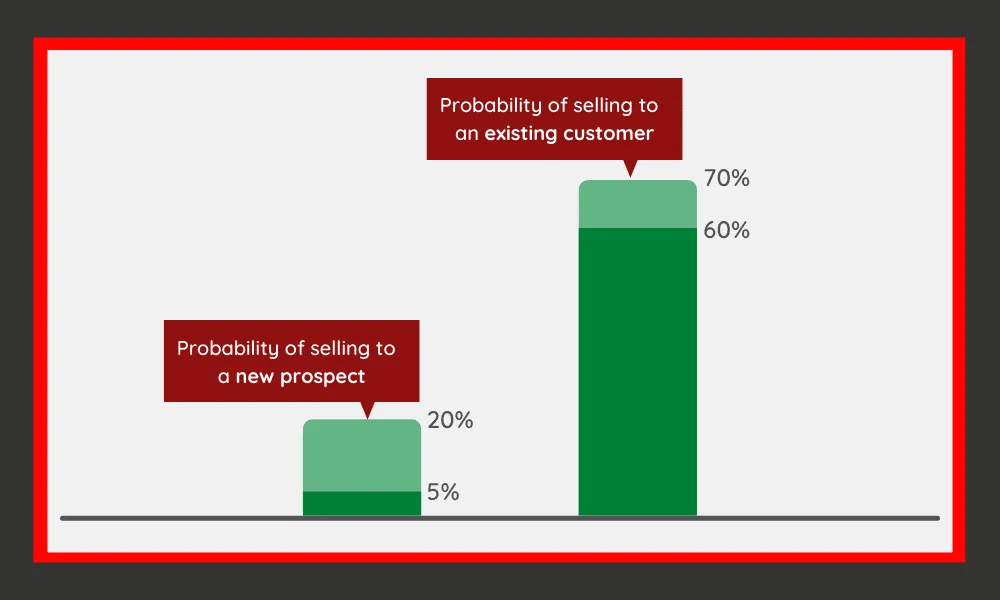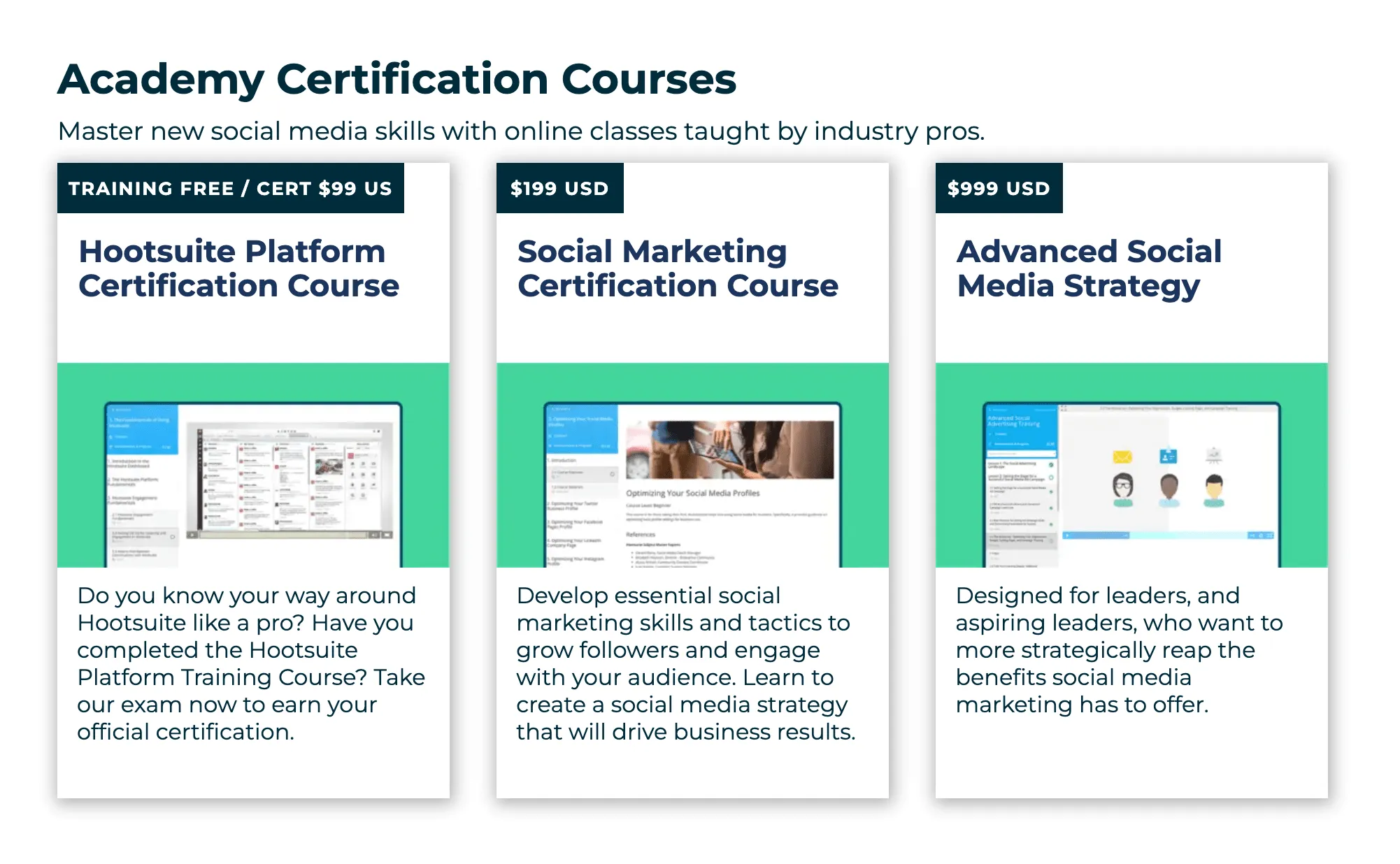5 Proven Customer Retention Strategies to Try Out
Maybe you already know that a 5% increase in customer retention can lead to a 25-95% increase in profit. Maybe you’ve already learned that it costs 5-25x more to acquire a new customer than to retain an existing one.
You’re ready to focus on customer retention strategies, but where do you start?
This might feel like an overwhelming step to take if your company’s priority has always been customer acquisition, but we’re here to share ideas that you can start using today.
Keep reading to learn about customer retention strategies and how to make it a priority in your organization. Need a specific question answered? Jump to a section of the article using the links below:
- What is customer retention?
- Why is customer retention important for your business?
- 5 Customer retention strategies to try
- How to measure your customer retention efforts
What is Customer Retention?
Customer retention is an assessment of how loyal customers are to your business.
Simply put, the goal of customer retention is to keep your customers coming back. For an online marketplace, retention means having customers come back to make frequent, high-value purchases. For a SaaS company or streaming service, it means having customers continue to renew their subscriptions and explore your additional offerings.
A simple way to calculate your retention rate is by comparing how many customers you have at the beginning of a period to how many of those customers you still have at the end of the period. The more active customers you still have, the better your retention rate.
Retention strategies are those you use to keep your users active and coming back to your product or service time and time again. They also encourage customers to engage with your brand, refer friends, and submit positive reviews.
Why is customer retention important for your business?
In case you and/or the stakeholders in your organization need a little more convincing that customer retention is worth prioritizing, here are a few impacts that returning customers can have on your bottom line and beyond:
- Repeat purchasers spend more and generate larger transactions. In a study by Bain & Company, the longer the relationship with an online retailer, the more the customers spent.
- Repeat customers refer more people and bring in more business. And these referrals are valuable! One study found that over the course of three years, referred customers spent an additional 75% of what the original shopper spent.
- Retention is cheaper than acquisition. 82% of companies agree that retention is in fact cheaper than acquisition.
- It’s easier to sell to an existing customer. The probability of selling to an existing customer is 3x to 35x higher than to a new one.

For even more on the impact of retaining customers, check out this article.
5 Customer retention strategies to try
1. Launch a loyalty program
While loyalty programs can (and should) be implemented at every stage of the customer journey, they’re best known as a customer retention tool.
It’s why since the earliest days of doing business, coffee shops offered punch cards and airlines offered frequent flyer points – brands want to be repeatedly chosen by every customer that they acquire.
Loyalty programs not only help you keep your best customers, but they help you win back lost customers. Here are a few examples:
- VIP Program: By setting usage or spending goals for customers and offering exclusive VIP rewards to those who reach them, customers will keep shopping with you when they know rewards await them in the future.
- Birthday Program: This is the perfect yearly opportunity to 1) re-engage inactive customers, and 2) continue to reward loyal users by sending them a special discount or incentive on their birthday. We can all agree that it makes us feel good when people (and companies) recognize our birthdays!
- Winback Program: Reactivate customers who have gone quiet and stopped engaging with your brand. Invite them to make a new purchase or re-activate their subscription with a special offer. (This works better than you might think!)
Loyalty programs increase a customer’s switching costs and give them a reason to stay loyal to your brand when they know you offer benefits that they won’t get anywhere else.
No matter what kind of loyalty program you choose to implement, the key is to make sure that the rewards you offer are actually attainable. For example, if your average order size is $75, don’t make customers spend $1,000 before getting a reward! The more often they are able to redeem, the better they will feel about your brand.
For more on loyalty programs for customer retention, check out our guide.
2. Personalize your content and offerings
It should come as no surprise that customers want to be treated like the individuals they are. A study from Marketo found that 79% of consumers are only likely to engage with an offer if it’s personalized to reflect the interactions they’ve had with the brand so far.
If a customer feels like they are being treated as just another name and phone number in your CRM, they will explore other options and their brand loyalty will waver.
One of the best places to start with personalization is in the email communications you send. Instead of sending the same mass email newsletter to every customer, try segmenting to get better engagement. You can segment your contacts by:
- Length of the customer relationship
- The channel through which the customer bought
- The products the customer bought
- The profitability of the customer
According to data from Experian, personalized email communications have 29% higher unique open rates and 41% higher unique click rates than generic messages. In addition to this, 80% of consumers are more likely to make a purchase when brands offer personalized experiences.
Even if all you have is the customer’s name and email, something as little as using their first name in the subject line can have an impact. In one study, open rates increased by 6-23%, clicks by 7-32%, and unsubscribes fell 11-17%
3. Revisit your onboarding experience
Your product’s onboarding experience has the ability to make or break the lifetime value of a customer. The impression you make on week 1 of a customer’s journey with your product can determine whether they become a loyal user or whether they never log in again.
Start by taking a look at how you onboard new customers today and ask these questions:
- What is the first thing a customer sees when they log in? Is it helpful?
- Do you guide the customer to relevant places in your app/website?
- Is it easy for new customers to quickly see your product’s value?
- Do you offer to check in with new customers?
- Do you provide new customers with relevant resources?
For subscription services especially, customer onboarding should encourage users to have their “aha” moment - also referred to as an “activation event”. This is the moment when the customer realizes the true usefulness, joy, or value of your product, and your core value becomes obvious to them, so they stick around as a paying customer.
Learning your activation event involves looking at past data to uncover what actions, journeys, or timelines are most likely to develop committed customers, and trying to repeat this as often as possible with every new user.
For more on customer retention and the activation event, check out our guide.
4. Educate and empower your customers
Similar to your onboarding experience, if you leave customers to fend for themselves, you’re much more likely to experience churn. Even well past the setup and onboarding processes, it’s still important to provide users with resources that help them become power users.
Not only does education make them masters of the product, but it also makes them more likely to refer new customers. They are more familiar with your value proposition and can clearly communicate the benefits to others.
Education can take the form of automated email campaigns that deliver a sequence of educational materials, a free or paid training academy full of videos and lessons, webinars, blog posts, or in-app widgets and cues.

Don’t let a misunderstanding or lack of product knowledge be the reason someone stops being a customer.
5. Ask for (and use) customer feedback
When you give customers the opportunity to share how they feel, you’re much better equipped to proactively reduce churn by addressing their needs and pain points.
This could look like a survey to various customer segments, or even an invitation for customers to participate in designing the next iteration of your product
When we had Ozkan Demir as a guest on The Advocacy Channel podcast, he helped us understand how to collect the best feedback from your customers and actually use it to build stronger, more profitable relationships with them.
Ozkan emphasizes that the feedback loop is a two-way street and a process based on trust. A big part of receiving feedback starts with showing that you’re actually willing to use the feedback in the first place. Keeping customers as a part of the process once you’ve implemented one of their ideas or resolved one of their pain points is critical to building this relationship and showing they are actually contributing to improving your product or service.
For more insights on collecting and using customer feedback, check out Episode 7 of The Advocacy Channel.
How to measure your customer retention strategies
When implementing a new customer retention strategy, it’s important to track your results to understand your impact. Start by taking inventory of these metrics:
Churn rate
The simplest calculation for churn rate is to take the number of customers lost during a specific time frame divided by the total number of customers you had within that time frame. The higher your churn rate, the more customers are leaving without showing any loyalty to your brand.
Lifetime value (LTV)
The basic LTV calculation for a SaaS business is to take the average customer lifetime (in months), multiplied by the average monthly spend of a customer. You can multiply this result by your gross margin for a more accurate result.
Wrapping Up
The main takeaway is that the more effort you put into maintaining positive customer relationships, the more likely customers are to stick around, and the longer you’ll be in business. This is only becoming more and more important as consumers have no shortage of brands to choose from and switch between.
When it’s less expensive to maintain old relationships than to create new ones, and happy customers recommend your business to their peers, adding retention strategies to your marketing mix should be a no-brainer.